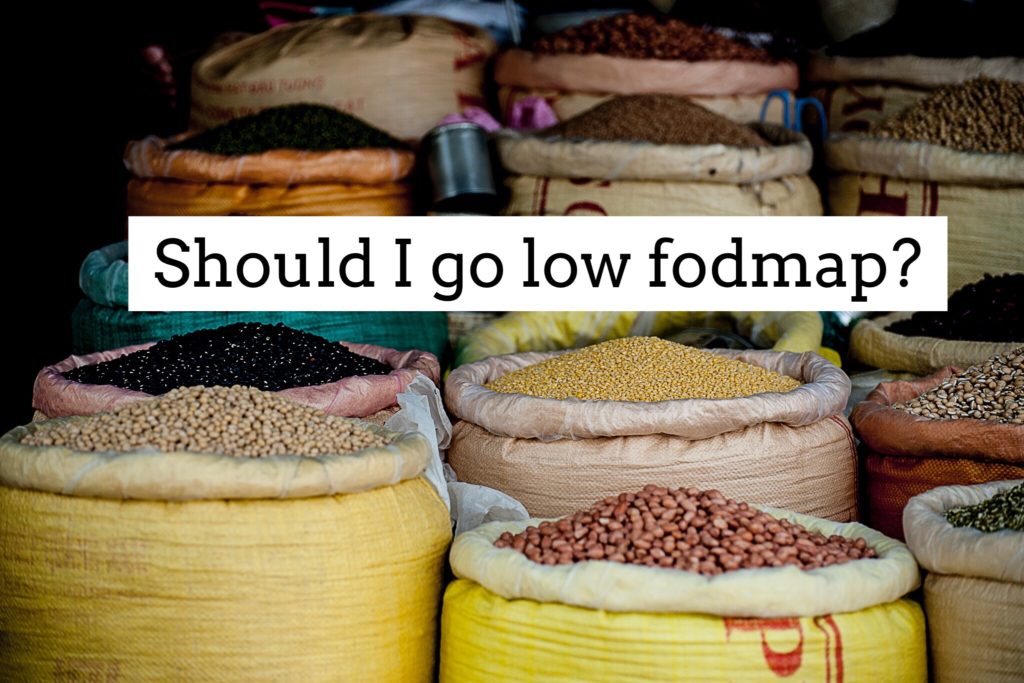Currently, many people are being sent straight to the low FODMAP diet and it is being suggested they start on this diet by themselves. This diet has a big health halo about it and is being seen as a miracle cure. Now whilst this is an evidenced based approach and totally can work for many people, there is more to this than meets the eye. In reality there is never a miracle cure and this is a complex diet that really needs dietetic support or a lot of support from a health care professional who understands it. This diet is very restrictive leading to large changes in the foods you eat, many people follow the first elimination stage and do not progress to the reintroduction stage leaving them with limited food options. The Fodmap diet can be suggested too early on, as there are a number of simpler strategies to try first, which may make all the difference.

Firstly, what is the this Fodmap thing? FODMAP stands for fermentable oligosaccharides, disaccharides, monosaccharides and polyols. This essentially creates a diet low in allergens and common triggers, with foods being introduced back to the diet slowly to assess their role in triggering a flare up. People often report these foods as common triggers:
- Dairy
- Onion
- Garlic
- Caffeine
- Fatty foods
- Certain fruit and vegetables
- Lentils, beans and pulses
So cutting out all these foods gives your digestive system a rest, but it also leaves you with large gaps in your nutrition. Being on this diet also affects your gut bacteria and could after your fibre intake. So it’s key not to stay on it for longer than you need to. This is why working with a specialist is important, someone to help you plan what you can eat, find a balanced way of eating and ensure you only stay on the elimination stage for as less a time as possible.
You know how sometimes in life we have the tendency to jump into the deep end before seeing what other options there are?Whilst these strategies may not help everyone they are worth trying first.
- CHEW WELL – Slow down your eating and chew thoroughly. It helps your body digest.
- SMALLER MEALS – Having smaller meals means there is less for the body to digest. Do make sure you eat more frequently so you still meet your nutritional needs.
- REDUCE YOUR STRESS – Easier said than done but find things that help you destress. Reading, mindfulness, colouring, a bath. Whatever works for you!
- FIBRE – Try reducing your fibre or increasing it! It depends on your symptoms. If you have bloating and pain then decreasing insoluble fibre (beans, pulses, seeds, root veggies and brassicas) can help and slowly increasing soluble fibre (certain fruit and veggies, pats, pectin) can help. This has to be balanced with your fluid intake.
- MOVE MORE – Moderate exercise can also help symptoms.
- WATCH YOUR DRINKS – Reduce caffeine and alcohol.
- BREATHE BETTER – deep breathing can make a world of difference to our bodies and minds. 10 minutes a day can really help.
Whilst I appreciate it is not always easy to get access to a dietitian who is trained in the low Fodmap method it is worth trying these initial strategies first
Priya is trained in the low Fodmap diet and can work with you on a 1-1 private basis in person or via video call. This requires a minimum of 2 consultations.